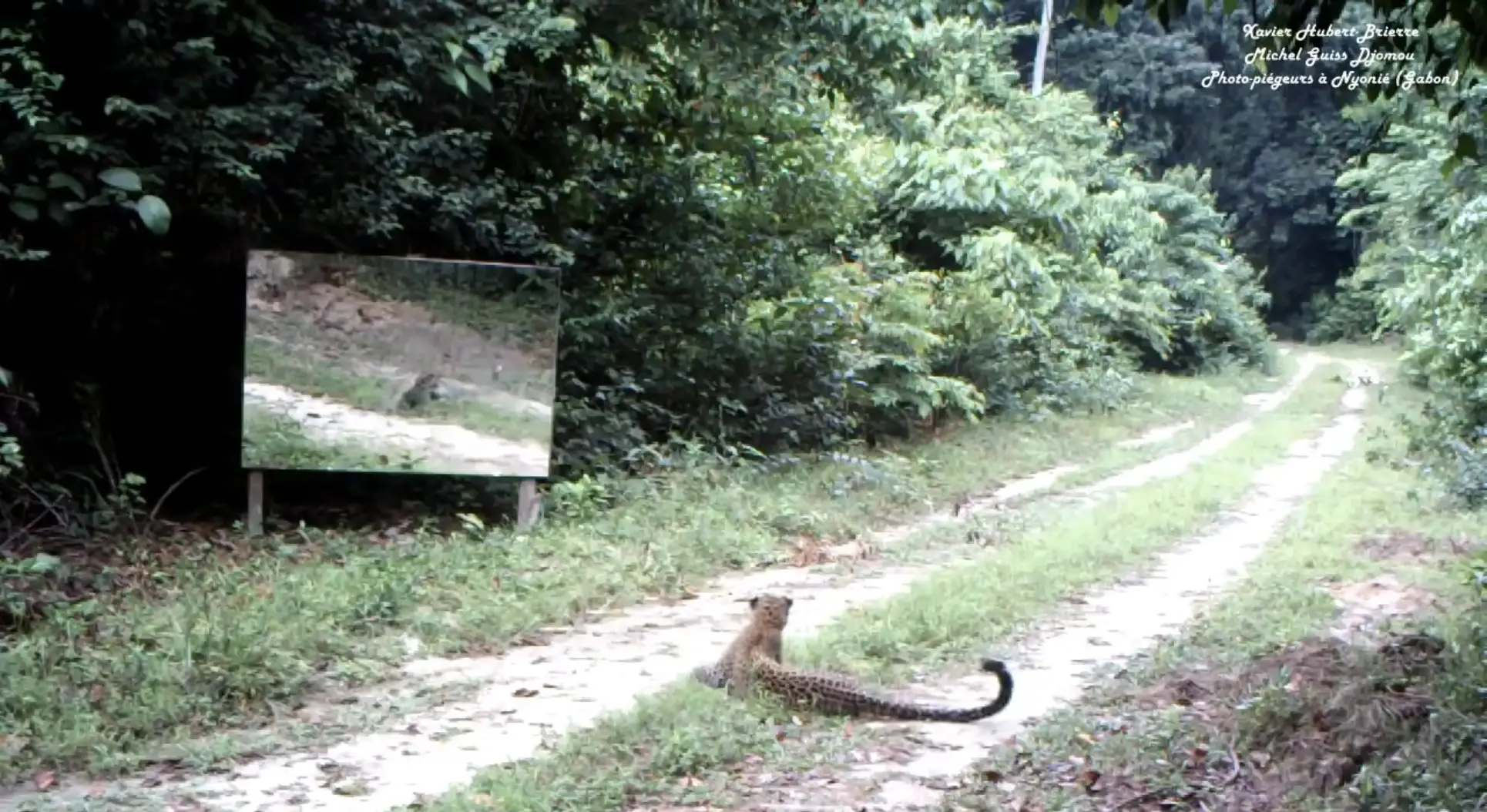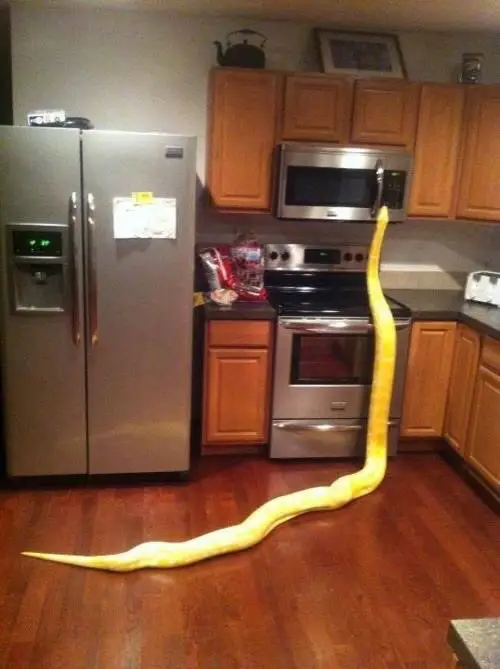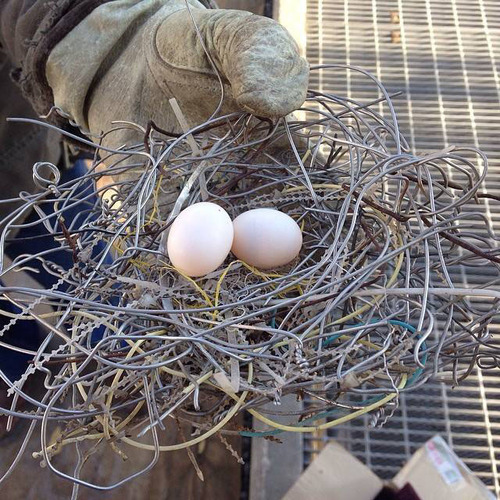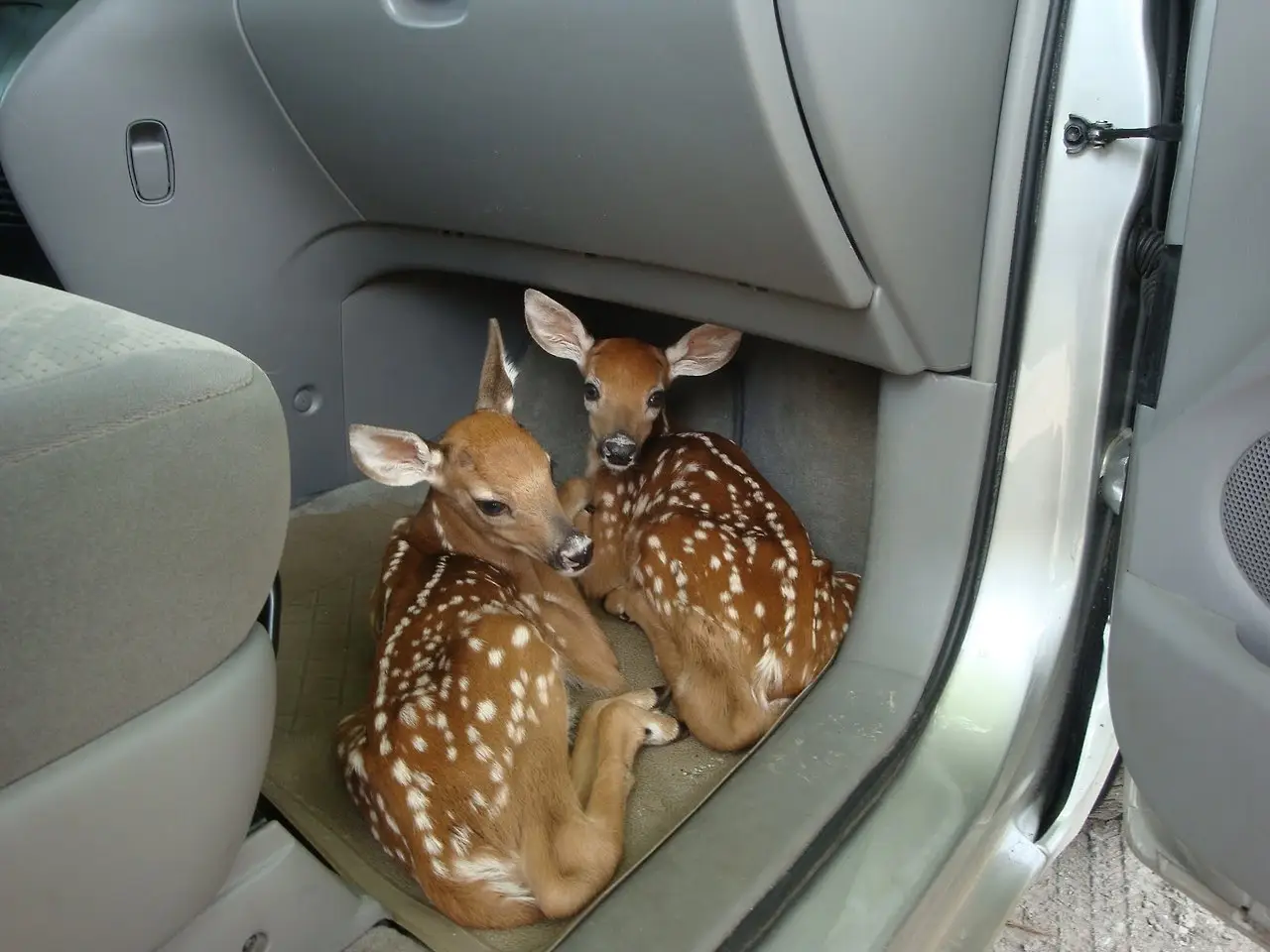About a year and a half ago, a friend on Are.na suggested my channel “Wild Animals vs. Manmade Materials” would be better without the pets.
Had pets and other domesticated animals gradually crept into my channel without me realizing? Yes, it was true. It wasn't that dogs on skateboards and cats on roombas weren't interesting by themselves: rather, their presence had weakened my channel as a conceptual unit.
The distinction between wild animal and pet was important, but at the time I couldn't completely articulate why. Returning now, I recall the beginnings of my channel, the subsequent policing of pets, and how this transformation led me to more deeply consider the channel's significance.

I began Wild Animals vs. Manmade Materials five years ago in 2012, making it quite ancient in Are.na years. It started with a fascination towards a single piece of media —
At the time, I was returning to YouTube day after day to watch this mesmerizing video of leopards examining their reflections through mirrors installed in a jungle.
"Leopards VS mirror," the original subtitle of the video, made me curious: Were the leopards "against" the mirror? Were the leopards preparing to fight the mirror as they circled around it, hopped on top of it, and eventually made eye contact with the creatures inside of it? But the video is long, and the mirror doesn't fight back. The leopards seem more curious than opinionated, oscillating between mirror as prey, enemy, friend, inanimate object, or possibly even self.
I wondered if there were other such Animal-Versus-Thing content on YouTube, even if not titled so helpfully. After some quick searches, I found a fox jumping on a trampoline and ducks in a mirrored room: three things, enough to merit a collection!
I titled my channel as specifically as I could and waited. It wasn't long until other Are.na users started adding to it. Early contributions include: a seagull walking on an escalator, an octopus sliding through a crack in a boat, a deer in a backyard pool, a wasp building a nest in the handle of a car, and a frog swimming in zero gravity. My channel grew quickly. This was likely due to the captivating, funny, strange, and beautiful material paired with its relatively easiness to pinpoint and categorize (due to my channel's straightforward title). From then on, "wild animals vs. manmade materials" seemed easy to find online. In fact, I started seeing them everywhere. They lived at multiple stops along my web browsing path, existing within amateur YouTube videos, memes and viral images on Tumblr, and articles on mainstream news websites like the New York Times and the Guardian.
Fast forward three years, and my channel was littered with pets. While they are often cute and sometimes interesting, pets, I told myself, are not wild animals. As domesticated creatures, pets are much more likely to interact with manmade materials than their wild counterparts. And their dependence on humans often renders their interactions predictable. Pets, after all, are designed by and for humans.
On Are.na, the structure is purposely quite open—there is no official or recommended way to moderate a channel you own. I carefully considered the most pleasant way to remove these contributions people had so generously volunteered into my channel. I decided first to warn contributors by commenting on the pet blocks in question, explaining that pets weren't allowed in this channel even though the difference between domesticated and wild animal can be slippery at times. ("Especially when it comes to exotic pets and wild animals raised by humans!" I thought to myself, remembering some difficult edge cases.) I also suggested that if the contributor wanted to save their pet contribution elsewhere, they had a week to do so, since there is no way to retrieve a block on Are.na after it has been deleted.
After a week, I officially deleted all the pets. But there was one pet I recall not deleting:
Is this puppy's howl a sign that it recalls a time thousands of years ago before being domesticated by man? In this rare instance, I believe the pet acts as the manmade material. The pet, the Pomeranian puppy, reacts to a representation of its wild animal counterpart, the wolf, contextually illuminating the species' relationship.
Edge cases like this made me realize that each contribution, pet or not, must be addressed contextually on an individual basis. Metadata can be useful in judging, especially in the case of a stray image—one without title, description, or source link. Without such clues, I use Are.na's "Find original" link to automatically do a reverse Google image search. For instance, recently I wondered about an image of a massive yellow snake in a domestic kitchen, raising itself towards the microwave as if retrieving a now-warm treat. Was the snake a pet? Or was it wild, breaking and entering to use the microwave? My search results revealed the image was viral, its source difficult to trace.

I also tend to be more lenient towards reptiles since they are not considered domesticated. Most dogs, besides a few breeds, no longer resemble their wild ancestor wolf. They have been bred for generations into domestication, while pet reptiles typically look identical to their wild counterparts.
In the case of any possible pet image without source, or any reptile pet, I ask myself "Does this image carry the channel's spirit?" to decide its fate.
Removing the pets helped me better understand the categories of wild within my own channel. When I first pictured wild animals, they were the kind that were living anywhere humans were not. These animals inhabit nature preserves, the vast ocean, or any environment allowed to be truly wild, where ecosystems can flourish. They thrive by existing away from and parallel to humans. Parallel lines apparently never intersect. But when they do, it's rare, and this is the focus of my channel. Sometimes it happens naturally or unexpectedly, while other times the probing and sometimes dangerous curiosity of humans invokes it. Starfish, for example, have been known to expel microchips from their arms originally injected by researchers to identify and track them.
Reviewing the contents of my channel, I recalled the synanthropes: those wild animals that benefit from an association with humans, cohabitating alongside them. Some sparrows, for instance, use smoked cigarette butts in their nests because they function as a parasite repellent. Sparrows are extremely adaptable; this fact likely attests to their being the most widely distributed bird species on the planet. While these aren't the wild animals I originally envisioned (since I would consider them overlapping and wavy rather than separate and parallel lines), they are still wild, thriving independently of humans. My channel includes these common creatures since, unlike pets, their independence allows them to interact unexpectedly with manmade materials, opening up a new understanding.

As it turns out, being strict about the no-pets rule didn’t limit my channel in any way. Arguably, it did the reverse. Upon arrival, the pets came mostly in video or image format, and often the contributor didn’t offer any supporting metadata. (The “tumblr…” filename would hint at its viral, nomadic past.) Now, there is a better variety of block types: in addition to videos and images, contributors often post links and sometimes texts. You could say it is media agnostic, allowing the theme to ride. You could also say it’s diverse: the channel also pulls from an even wider array of sources, including amateur recording, artworks, memes, academic or scientific research, advertisements, and news articles. The one unexpected result of ruling out the obvious and ubiquitous pet content was receiving contributions from more—and more obscure—sources. Now free of pets, I like to think my channel is “healthy.” Diverse ecosystems tend to thrive.

Sometimes I consider the titles of the news stories from my channel as a dystopian but informative poem:
Toyota Is Recalling More Than 800,000 Cars Because of Spiders
Making the 9/11 Memorial Lights Bird-Safe
Baby Dolphin Dies Being Passed Around For Selfies
Sickly sea lion pup found sleeping in booth inside La Jolla restaurant
Miniature horse rescued from sinkhole
Hong Kong: Wild boar smashes through shop ceiling
Deer crashes into bus in Johnstown
Turtles Delay Flights At JFK Airport With Mating Ritual
Weasel Apparently Shuts Down World's Most Powerful Particle Collider
The Global Internet Is Being Attacked by Sharks, Google Confirms
Animals Rule Chernobyl Three Decades After Nuclear Disaster
"The first subject matter for painting was animal. Probably the first paint was animal blood," writes John Berger in Why Look at Animals? (1980). Indeed, humans have admired and interacted with wild animals for a long time, using them also for food, clothing, transportation, and companionship. Many have used animals as messengers and signals. Sometimes, mere observation could provide advance warning of danger. I imagine the neanderthals in their cave, staring out at the horizon, noticing the cattle changing formation—something the early humans gradually learned to be advance warning of a big storm.
Some species in particular are more susceptible or have greater exposure to a particular threat than humans in the same environment. Humans have called these "sentinel species," for by observing them, humans can "keep watch" on their own fate. The canary in the coal mine is a well-known example: coal miners took the bright yellow birds down into the mine, and if they tweeted it was an early warning sign of poisonous but odorless carbon monoxide.
In a speech given to physics teachers and later reprinted in The Chicago Tribune Sunday Magazine (1969), author Kurt Vonnegut used "the canary in the coal mine" as a metaphor to describe the "use" of the arts. Artists are useful to society, he writes, because they are so sensitive, "keeling over like canaries long before more robust types realize there is any change whatsoever." Artists are sentinel animals, and can be thought of as alarm systems to social, cultural, and political shifts of the world, should one choose to instrumentalize them.

When artists use wild animals in their work, I like to think they are examining the state of the planet. In Francis Alÿs's film The Nightwatch, a fox roams London's National Portrait Gallery after hours. Through compiling footage from the museum's built-in security cameras that follow the fox's path, Alÿs calls attention to the ubiquity of public surveillance in London, where the fox is a common urban cohabitant and the National Portrait Gallery is a well-known cultural landmark. In Anna Jermolaewa's three photographs Untitled (Good Times, Bad Times), pigeons rest on a brutalist wall clock. It turns out the minute hand is more dependable for a rest than the hour, making the rest a relatively quick one.
In a sense, Wild Animals vs. Manmade Materials is a collection of sentinel species. You can understand it as a portrait of the planet using animal signals as material. It's also inadvertently a collection of human technology through time, including surveillance systems (like in The Nightwatch), drones (caught by falcons and tigers, and designed by DARPA to look like hummingbirds), the Internet (whose undersea cables have been attacked by sharks), powerful light beams (like those that confuse migratory birds when beamed into the sky as a 9/11 Memorial) and border walls (which prohibit endangered jaguars of the American Southwest and Mexico the large amounts of land needed to survive and reproduce), to name a few.
Maybe we're so fascinated by wild animals because they teach us about ourselves and our own behavior. Humans are domesticated animals just as pets are, but wild animals were here before us, will likely be here after us, and can exist independently of us.
I created this channel because a video piqued my interest. A suggestion to narrow the scope ended up broadening and deepening my thinking in regards to the subject. But at first, this policing of my own channel felt strange and aggressive. I trusted my intuition and was fueled by my friend's suggestion. While I did delete a lot of pets initially, the policing mindset evolved into one of sustained maintenance. I check up on the channel regularly, and its cultivation has become an active part of my practice.
I wouldn't have come to these conclusions if it weren't for the arrival of pets, their subsequent removal, and my changed thinking towards policing as cultivation. I am thankful for these errors thrown into my system, for now I know what I was really looking for.
